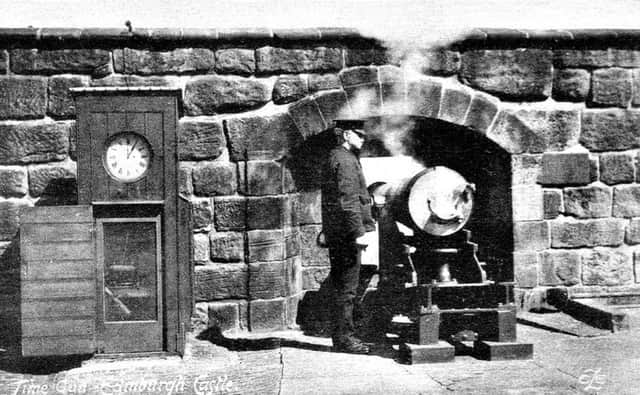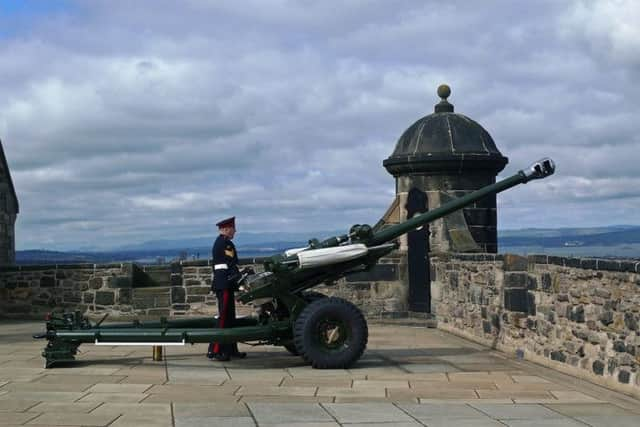Lost Edinburgh: The One O’Clock Gun


Public demand grew in Edinburgh during the 1850s for an accurate time service but instead of a clock the Time-Ball on top of the Nelson Monument on Calton Hill was installed. The ball was wound up to the top of a pole and dropped by an electrical charge at exactly one o’clock. There were problems of course. The ball was not visible through ‘mists or other optical obstructions’ – or if you happened to be looking the other way at one o’clock. Undaunted, the public subscribed to the introduction of an audible time signal.
It was decided that the report of a cannon would be heard much more clearly than the stroke of a bell and the Royal Artillery provided a 94 pound gun at Edinburgh Castle. Experiments with other guns had resulted in nearby windows breaking. The cannon was connected to time-keeping equipment at the Observatory on Calton Hill by a 4,200ft long insulated cable which operated a mechanical trigger to fire the gun at exactly the right time. The cable was the longest in the world at the time and the clock was kept to the precise time by astronomical observations.
The first firing of the gun


Advertisement
Hide AdAdvertisement
Hide AdThe first public firing of the Time-Gun was arranged for June 5 1861 and 300 members of the public, who had taken an interest in the project, and other distinguished guests were invited to attend at the Calton Hill Observatory. The excitement was considerable amongst the invited audience as they awaited the simultaneous drop of the Time-Ball and flash of the cannon at the Castle; the sound of the gun was expected four seconds later due to the distance between Castle and Observatory.
Precisely at one o’clock, the Time-Ball dropped and everyone ‘held their breath, strained their eyes and bent their ears towards the Castle’. After a long interval, to the ‘considerable disappointment of the audience and embarrassment of the organisers’, there was no sign of anything in the way of a time signal from the Castle and the invited guests were welcomed back the following day. The problem turned out to be a faulty detonator in the cannon.
After its false start, the one o’clock gun soon became well-known for its dependability and remains a daily feature of Edinburgh life to this day.